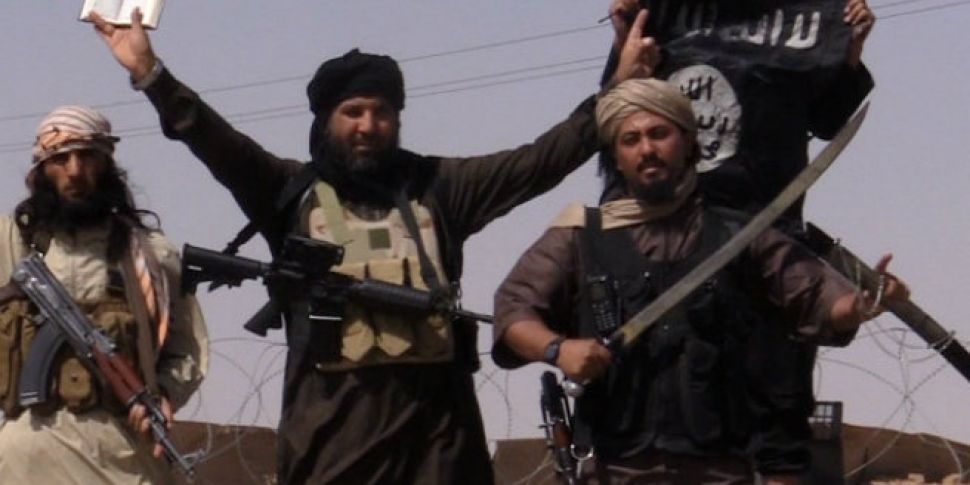Following the attacks in Paris on Friday night, French President François Hollande said the killings were an “act of war” waged by “a terrorist army, a jihadist army, by Daesh, against France.”
He did not use the term Islamic State, but rather Daesh - an Arabic term which the group itself has banned (under threat of mutilation), and one which could become increasingly relevant in a critical battle of words and symbols against Islamic State.
Hollande is not the only major western leader to eschew the use of the term Islamic State publicly in the past few days. Speaking at the G20 summit in Turkey, US president Barack Obama said his host nation “has been a strong partner with the United States and other members of the coalition in going after the activities of ISIL, or Daesh, both in Syria and Iraq.”
Similarly, John Kerry, the US Secretary of State, said in Vienna that the US “welcomes support in the fight against Daesh.”
All three are part of a growing number of politicians, commentators and media outlets now referring to the group more commonly known as Islamic State, or ISIS, as Daesh.
So what is behind the change in terminology? And what is Daesh?
The exact name of the group now most commonly known as the Islamic State – before adding Daesh into the equation – has long been fluid, largely due to the group changing their form and name numerous times in the past decade, but the current term is seen as problematic for a variety of reasons, not least due to the inherent propaganda boost applied to the group each time it is used.
The problem with using ‘Islamic State’
The name Islamic State has been problematic for many since its introduction, with prominent commentators refusing to refer to the group as anything other than the “so called” Islamic State, so as to not aid in giving their organisation and acts any claim to be one that represents the global and diverse Islamic population of some 1.5 billion people.
Obama has made the point that the group “is not Islamic ... and [is] certainly not a state” and in September of last year the French government formally decided to refer to the group as Daesh.
Why use Daesh?
The term Daesh was first used by Arabic and Iranian media - who were hostile towards the group and rejected its proclamation as an Islamic state - in 2013, and has since spread across the Arabic world.
In September 2014 French Foreign Minister Laurent Fabius asked media organisations to follow suit and cease using the term ‘Islamic State.’
“This is a terrorist group and not a state. I do not recommend using the term Islamic State because it blurs the lines between Islam, Muslims and Islamists. The Arabs call it ‘Daesh’ and I will be calling them the ‘Daesh cutthroats’,” he said.
When IS executed Jordanian pilot Muath al Kasaesbeh in February 2015 his father called on his government “to erase the Daesh organisation.”
In June this year, as Vox report, 120 British MPs wrote to the director-general of the BBC asking that the broadcaster begin referring to the group as Daesh, as the use of the titles ISIS and Islamic State “gives legitimacy to a terrorist organisation that is not Islamic nor has it been recognised as a state”.

Image: The letter to Lord Hall of the BBC, which was singed by 120 MPs (Vox.com/Source)
What does Daesh mean?
Daesh is in its literal form is an acronym of the group’s proper Arabic name ‘al-Dawla al-Islamiya fi al-Iraq wa al-Sham’, but, as the Boston Globe reports, the Arabic word Daesh can be understood as a play on words, meaning “a bigot who imposes his view on others” or “to trample and crush” – it is a derogatory term, and so the group has banned the use of the word and threatened to cut out the tongue of anyone who utters it.
And the key to why they are so offended, and why an increasing number of their opponents are using the term, is in the propaganda war that is crucial to the outcome of the conflict between IS and its enemies.
Having utilised online propaganda to an unprecedented extent, the growth of the organisation has been aided hugely by its ability to reach potential recruits across the globe, both to draw them to the conflict in Syria and Iraq, and to carry out attacks further afield. The image of them as the legitimate rulers of an Islamic caliphate is central to their whole message – an image that the name ‘Islamic State’ is specifically suited to.
Not just propaganda – there’s science behind it too
But it’s not as simple as denying the group a perceived legitimacy, or showing sensitivity to the 1.5 billion Muslims who wish to be disassociated with the group and its atrocities. There is also scientific research that suggest the language we use can play an important role in decision making, and that by using the Arabic term politicians and military strategists can have more clarity when making critical choices.
A study done at the University of Chicago in 2013 found that by thinking in a foreign language we can reduce deep-seated and misleading biases, thereby preventing emotional and unconscious thoughts from interfering with the analytical thinking aspect of decision making.
So by using Daesh – or any foreign language term – decisions can be made with more clarity and less clouded by emotion, while also refusing to buy into the group’s claims of legitimacy.
Evolution of a name – from AQI to ISIL to IS
2004 - Islamic State essentially began in what we would recognise as its current form in 2004, having evolved from various Islamist and jihadist groups in post-Saddam Iraq. At the time it was known as Al Qaeda in Iraq and was led by Abu Musab al-Zarqawi, who pledged his allegiance to Osama Bin Laden.
2006 - In 2006, al-Zarqawi is killed in a US airstrike. His successor, Abu Ayyub al-Masri, assumes power in July and changes the group’s name to Islamic State in Iraq (ISI) shortly after. The name change is largely undertaken as a rebranding aimed at stemming the wave of attacks on the group by Sunni tribesmen. The leader feel the name ‘Islamic State’ will garner more local support.
April 2010 – Abu Bakr Al-Baghdadi assumes control of the group, following the death of al-Masri, who blows himself up during an ambush by US and Iraqi forces.

Image: Islamic State leader Abu Bakr al-Baghdadi, greeting people before delivering a sermon at a mosque in Iraq. (PA Images)
2013 – Following a merger with the al Qaeda branch in Syria – the Nusra front – ISIS once again re-brands, this time taking the name Islamic State in Iraq and Greater Syria – or ISIS. This is translated sometimes as Islamic State in Iraq and the Levant – leading to some calling the group ISIL.

Image: ISIS fighters enter the Iraqi city of Mosul in June 2014 (PA Images)
2014 – As ISIS makes rapid growth and advances – taking control of key sites such as Fallujah in Iraq and the Syrian city of Raqqa, which will eventually be the group’s headquarters.
Feb 2014 – Al Qaeda leader Ayman al-Zawahiri cuts ties with the group as he has grown frustrated with their expansion into Syria and their extreme methods.
June 2014 – The beginning of ISIS as we now know it, with the capture of Mosul. An attack that serves almost as the global announcement of the group’s capabilities and intentions, as they take Iraq’s second city, looting almost half a billion dollars in the process, making them the world’s richest terror group in one swift action. Two days later they take Tikrit, Saddam Hussein’s hometown. Iraqi military flee along with civilians as the extremists sweep across the country at rapid pace.

Image: ISIS fighters (Screengrab: Vice news)
June 29, 2014 – The declaration of the Islamic State. Abu Bakr al-Baghdadi announces himself the Caliph of the newly established caliphate – and the group declares its intentions to expand its territory on a near-global scale. Not wanting to be restrained by geographic indicators, and speaking of a far wider reaching end-goal, ISIS drop the “Iraq and Syria” from its name, and becomes simply the ‘Islamic State’.









